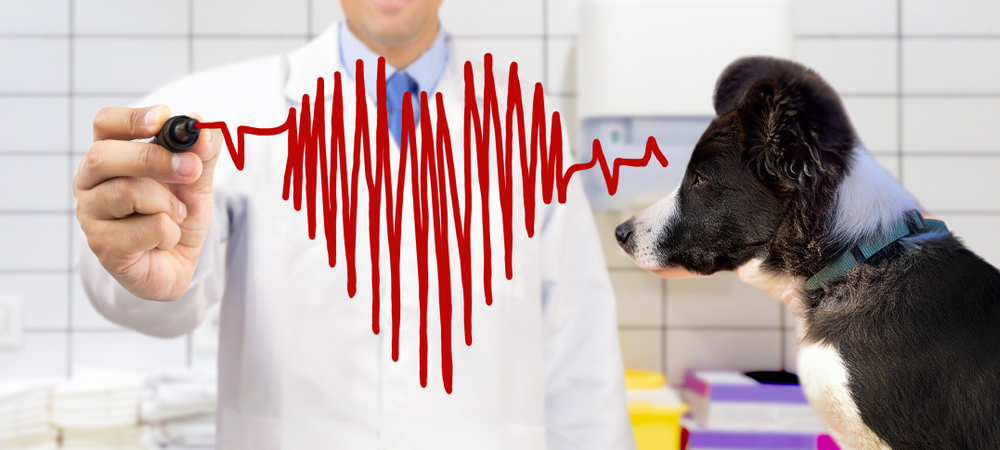How Vets Use CT Scans For Dogs to Monitor Chronic Conditions}
What You Required to Know About Vet Providers: A Summary of Diagnostic Devices and Procedures
Vet services play a vital function in keeping the wellness of family pets. Routine check-ups can reveal hidden wellness concerns early. Various diagnostic devices and procedures, such as blood tests and imaging techniques, provide important insights right into an animal's well-being. Recognizing these approaches is essential for family pet owners. What particular diagnostic procedures are most commonly made use of, and how can they impact a pet's therapy plan?
Value of Normal Veterinary Examinations
While several pet owners might ignore the relevance of routine vet exams, these appointments are vital for maintaining an animal's total wellness. Regular check outs to the veterinarian permit early detection of potential health and wellness problems before they intensify into severe problems. Routine examinations typically consist of inoculations, which are essential for stopping transmittable illness that could drastically influence a pet dog's health. Additionally, these consultations supply a chance for veterinarians to assess the animal's weight, dental health and wellness, and general problem, making certain that the pet dog is growing. Throughout these visits, pet dog proprietors can also get important advice on diet, exercise, and preventative care customized to their details family pet's demands.
Typical Diagnostic Procedures in Veterinary Medicine
In veterinary medication, precise diagnosis is essential for effective therapy. Common diagnostic treatments consist of blood testing strategies, progressed imaging modern technologies, and urinalysis, each playing a substantial role in identifying health issues. Understanding these approaches enhances the ability to give ideal take care of animal patients.
Blood Checking Methods
Blood screening strategies work as vital diagnostic devices in veterinary medication, allowing veterinarians to analyze the health of pets precisely. These techniques include collecting blood samples to assess various elements, such as red and white blood cells, platelets, and biochemical pens. Common tests include full blood counts (CBC), which examine overall health and find infections, and biochemical panels, which evaluate body organ function and metabolic standing. Additionally, serological examinations can identify details diseases with antibody discovery. Blood screening is minimally invasive and supplies crucial details that helps in detecting conditions, monitoring wellness condition, and reviewing reactions to therapies. On the whole, these methods play a vital role in making sure optimal look after family pets and animals alike.
Imaging Technologies Utilized
Analysis imaging technologies are essential tools in vet medication, matching blood screening methods by offering visual understandings into a pet's interior frameworks. Usual imaging modalities consist of X-rays, which work for evaluating bone fractures and finding foreign items, and ultrasound, which enables for real-time visualization of soft cells and body organs. Magnetic vibration imaging (MRI) supplies detailed pictures of complex anatomical locations, particularly in neurological assessments. Computed tomography (CT) provides cross-sectional pictures, improving analysis accuracy for different conditions. Each of these technologies aids veterinarians in diagnosing illnesses, planning treatments, and keeping track of recovery. By integrating imaging innovations, veterinary professionals can better assess a pet's health and make educated choices regarding their care.
Urinalysis and Diagnostics
Urinalysis acts as a crucial diagnostic device in veterinary medicine, giving valuable understandings into an animal's general health and wellness and helping in the detection of various problems. This non-invasive treatment assesses urine samples to analyze kidney function, hydration standing, and metabolic problems. Common parts checked out consist of certain gravity, pH levels, sugar, proteins, and the existence of blood or microorganisms. Abnormal searchings for can indicate problems such as urinary system infections, diabetes mellitus, or kidney condition. To boost analysis precision, urinalysis is often done together with various other tests, such as blood job and imaging studies. Early discovery with urinalysis can lead to prompt treatments, enhancing the diagnosis for numerous vet clients. It is an essential aspect of complete veterinary care.
Recognizing Blood Tests and Research Laboratory Analysis
Comprehending blood examinations and research laboratory evaluation is essential in veterinary medicine as it aids in identifying different health conditions in animals. Different kinds of blood examinations provide crucial information regarding a pet's inner state, while analyzing lab results requires cautious factor to consider of countless factors. This section will check out the sorts of blood tests readily available and the importance of their results.
Kinds of Blood Examinations
Blood examinations play a vital role in veterinary medicine, supplying crucial insights into an animal's health condition. Various sorts of blood examinations are used, each offering different purposes. Complete blood counts (CBC) assess total health and wellness and find conditions such as anemia or infection. Biochemical profiles review organ function by measuring enzymes and electrolytes, offering insights into metabolic health. Serological examinations identify particular antibodies or microorganisms, helping in the diagnosis of infections or autoimmune diseases. Blood typing guarantees safe transfusions, while coagulation examinations determine the blood's capability to clot, essential for operations. These tests jointly boost medical diagnosis, therapy planning, and monitoring of an animal's health, highlighting the importance of comprehensive laboratory analysis in vet care.

Interpreting Lab Results
A comprehensive evaluation of laboratory outcomes is vital for exact diagnosis and therapy in veterinary medication. Analyzing laboratory results requires an understanding of typical recommendation arrays and the significance of variances. Blood examinations can reveal various health indicators, such as body organ function, electrolyte balance, and the existence of infections. Vets should take into consideration the entire medical picture, including the animal's background, physical exam searchings for, and any kind of symptoms provided. Variations in results may occur from aspects such as age, type, and underlying wellness problems. Subsequently, laboratory outcomes should not be viewed in isolation but rather as part of a comprehensive analysis approach. Precise analysis permits tailored treatment strategies and much better end results for veterinary individuals.
Imaging Techniques: X-rays, Ultrasounds, and Beyond
Imaging techniques are necessary tools in veterinary medication, offering vital insights right into the health and wellness and well-being of pets. Among one of the most commonly made use of approaches are Ultrasounds and x-rays. X-rays are vital for picturing bone structures, aiding vets determine fractures, growths, or foreign items. This method is fast and non-invasive, making it ideal for immediate situations.Ultrasounds, on the other hand, utilize acoustic waves to create pictures of soft tissues and organs. This strategy is specifically see this here helpful for examining the heart, abdominal area, and reproductive organs, permitting veterinarians to analyze conditions like liquid accumulation or body organ abnormalities.Beyond X-rays and ultrasounds, advanced imaging strategies such as computed tomography (CT) and magnetic resonance imaging (MRI) are significantly utilized in vet method. These methods use in-depth cross-sectional images, boosting the precision of diagnoses and treatment plans. Cancer Veterinary Near Me. Generally, imaging methods play an essential function in ensuring click this site reliable vet treatment
The Role of Biopsies in Diagnosing Family Pet Health Issues
Precision in detecting wellness issues in animals often hinges on using biopsies, which give conclusive information about tissue irregularities. A biopsy entails the elimination of a tiny example of cells for evaluation under a microscope, enabling veterinarians to identify various conditions, including infections, tumors, and inflammatory conditions. This analysis device is vital for distinguishing between malignant and benign growths, directing treatment decisions, and assessing the seriousness of a condition.Biopsies can be done utilizing various methods, such as needle goal, incisional biopsies, or excisional biopsies, depending upon the location and sort of tissue involved. The choice of approach might impact healing time and the amount of tissue collected. Inevitably, the information gleaned from a biopsy can lead to targeted treatments, boosting results for family pets dealing with major health challenges. Veterinarians highlight the value of this procedure in attaining exact medical diagnoses and reliable therapy plans.
Advanced Diagnostic Tools: Endoscopy and CT Scans

Advanced analysis tools, such as endoscopy and CT scans, play an essential duty in modern-day vet medicine, using non-invasive methods to picture inner structures and detect various problems in pets. Endoscopy involves using a flexible tube outfitted with a video camera, permitting vets to analyze the stomach tract and breathing system straight. This technique can reveal problems such as lumps, international bodies, or swelling, enabling targeted treatment plans.CT scans, on the various other hand, utilize sophisticated imaging modern technology to create detailed cross-sectional photos of the body (Cancer Veterinary Near Me). This technique is especially valuable for assessing facility frameworks like the mind, spine, and joints. By offering high-resolution pictures, CT scans aid vets in identifying issues that may not appear with traditional radiography. With each other, these advanced tools improve analysis precision, improve therapy outcomes, and inevitably add to far better general pet dog health and wellness administration

Translating Test Results: What Pet Dog Owners Should Know
Comprehending examination outcomes can be a tough task for pet owners, especially after innovative treatments like endoscopy and CT scans have actually been executed. Analyzing these outcomes requires a grasp of medical terminology and a clear understanding of what the searchings for show concerning the pet's wellness. Veterinarians typically give explanations, however the intricacy of the results can still lead to confusion.Pet proprietors need to proactively take part in discussions with their veterinarians, asking inquiries to clarify any unpredictabilities. It is important to understand irregular versus typical results and the ramifications for the family pet's treatment plan. In addition, acknowledging that some outcomes may call for additional testing or surveillance can help owners remain educated regarding their animal's health and wellness trip. Eventually, a collective approach between family pet owners and vet specialists promotes far better health end results and improves the total care experience for animals.
Often Asked Concerns
How Do I Pick the Right Veterinary Facility for My Pet?
Choosing the appropriate vet facility includes looking into neighborhood alternatives, reviewing credentials, going to centers, and assessing staff communications (CT Scans For Animals). Prioritizing visit our website recommendations from relied on resources can help guarantee the best care and environment for a pet dog's health requirements
What Should I Do if My Pet Dog Rejects to Go to the Vet?
When a pet dog refuses to visit the vet, it's advisable to stay calm, usage deals with or toys to lure them, and consider arranging a home visit if anxiety continues. Patience and favorable reinforcement are vital.
Exist Telehealth Options for Vet Solutions?
Telehealth choices for veterinary solutions are progressively available, permitting family pet proprietors to speak with veterinarians remotely. These services make it possible for discussions concerning health concerns, guidance on minor disorders, and follow-ups without needing to see a clinic.
Just how Typically Should My Family Pet Have Oral Check-Ups?
The regularity of oral exams for family pets usually depends on their age and breed. Typically, veterinarians advise annual dental analyses, although some pet dogs might need even more frequent brows through to maintain ideal oral wellness.

What Are the Costs Linked With Veterinary Diagnostics?
The expenses connected with vet diagnostics can vary extensively, commonly ranging from standard examinations like blood work to sophisticated imaging techniques. Elements affecting expenditures include the clinic's location, tools made use of, and specific examinations required for each and every family pet. Veterinary services play an important role in preserving the health and wellness of family pets. While several family pet owners might take too lightly the significance of regular vet check-ups, these visits are essential for keeping an animal's total health. Furthermore, these consultations provide a chance for vets to examine the animal's weight, oral wellness, and overall condition, making certain that the animal is growing. Precision in identifying health and wellness problems in family pets usually pivots on the use of biopsies, which supply conclusive details regarding tissue irregularities. Additionally, identifying that some outcomes might require additional screening or surveillance can aid owners stay informed concerning their family pet's health and wellness journey.